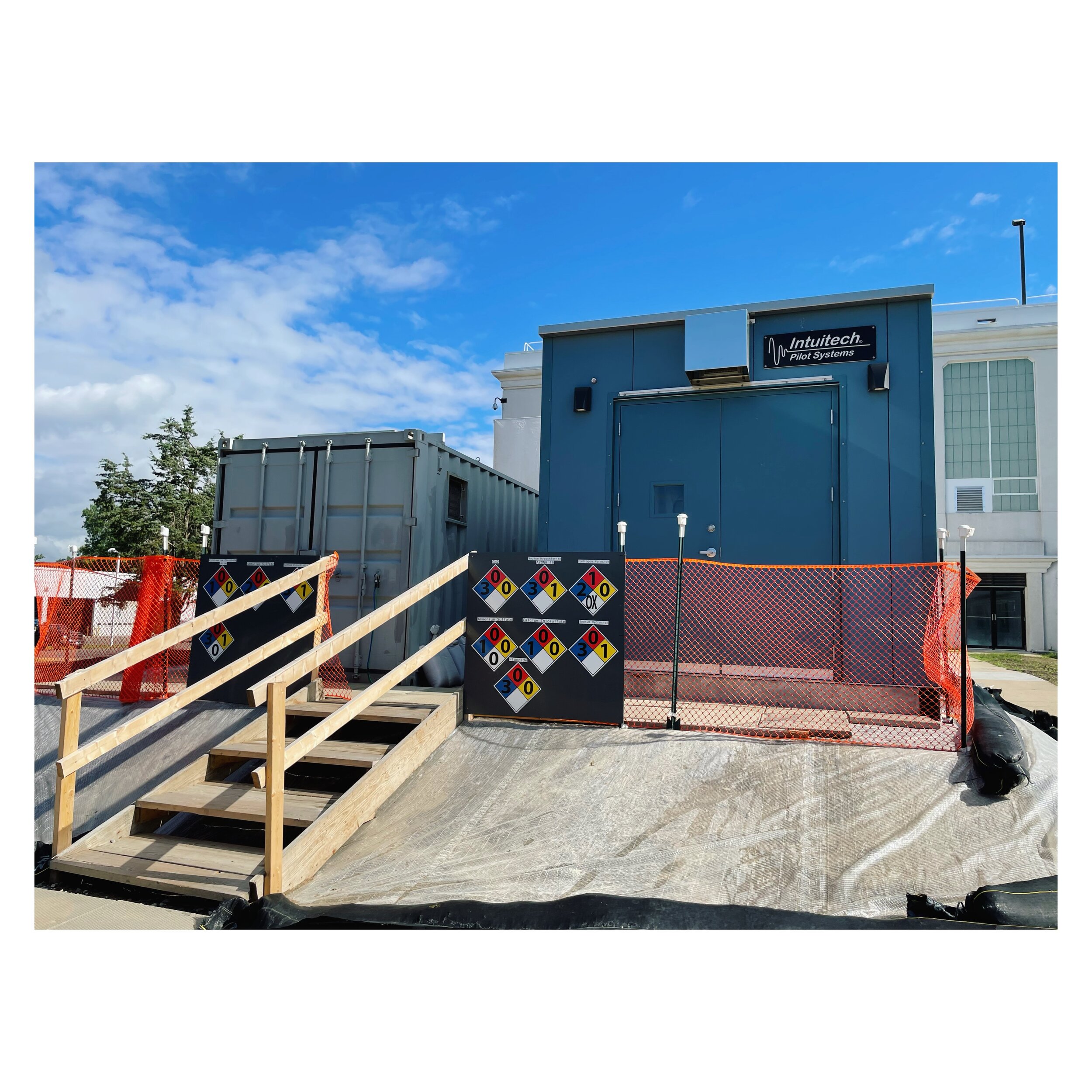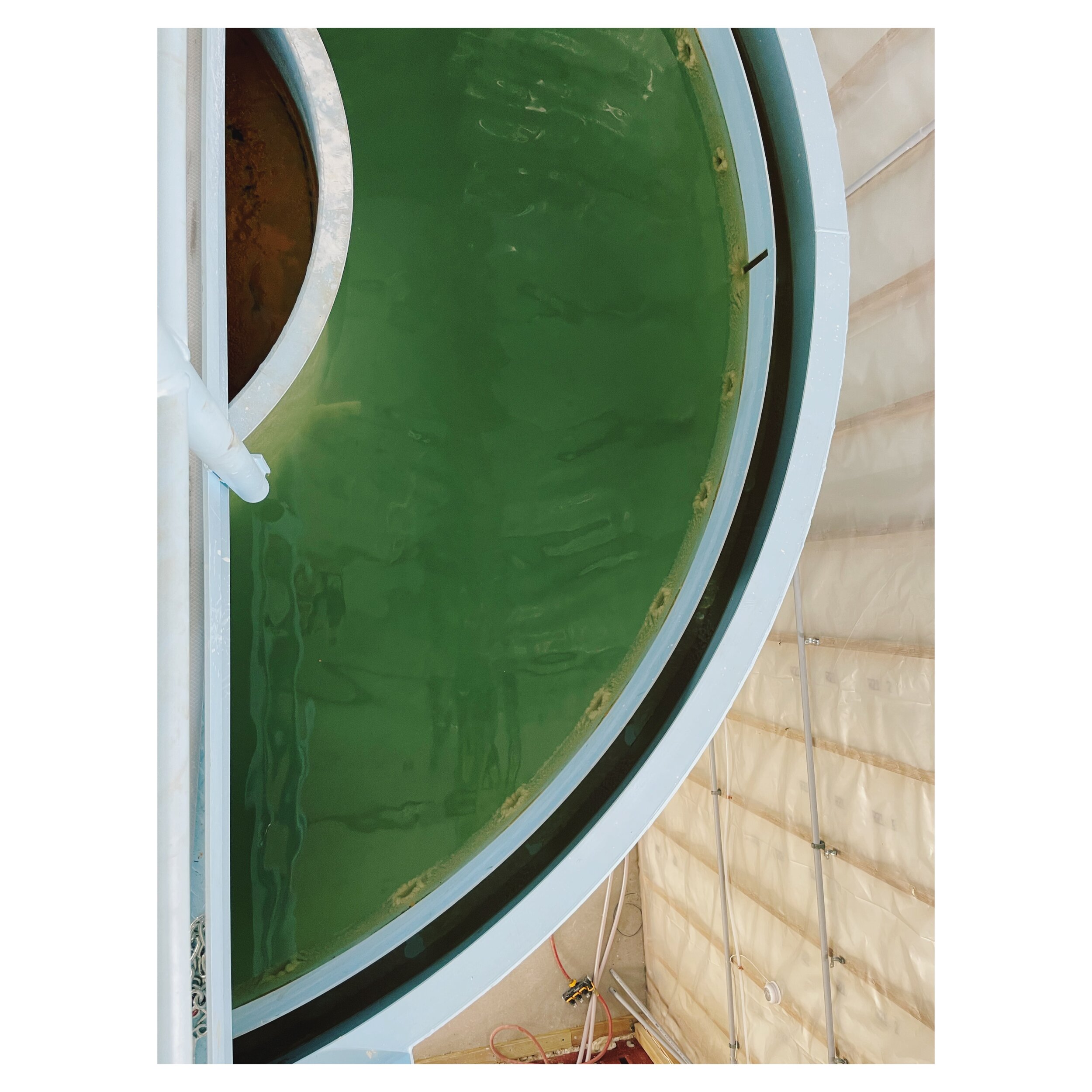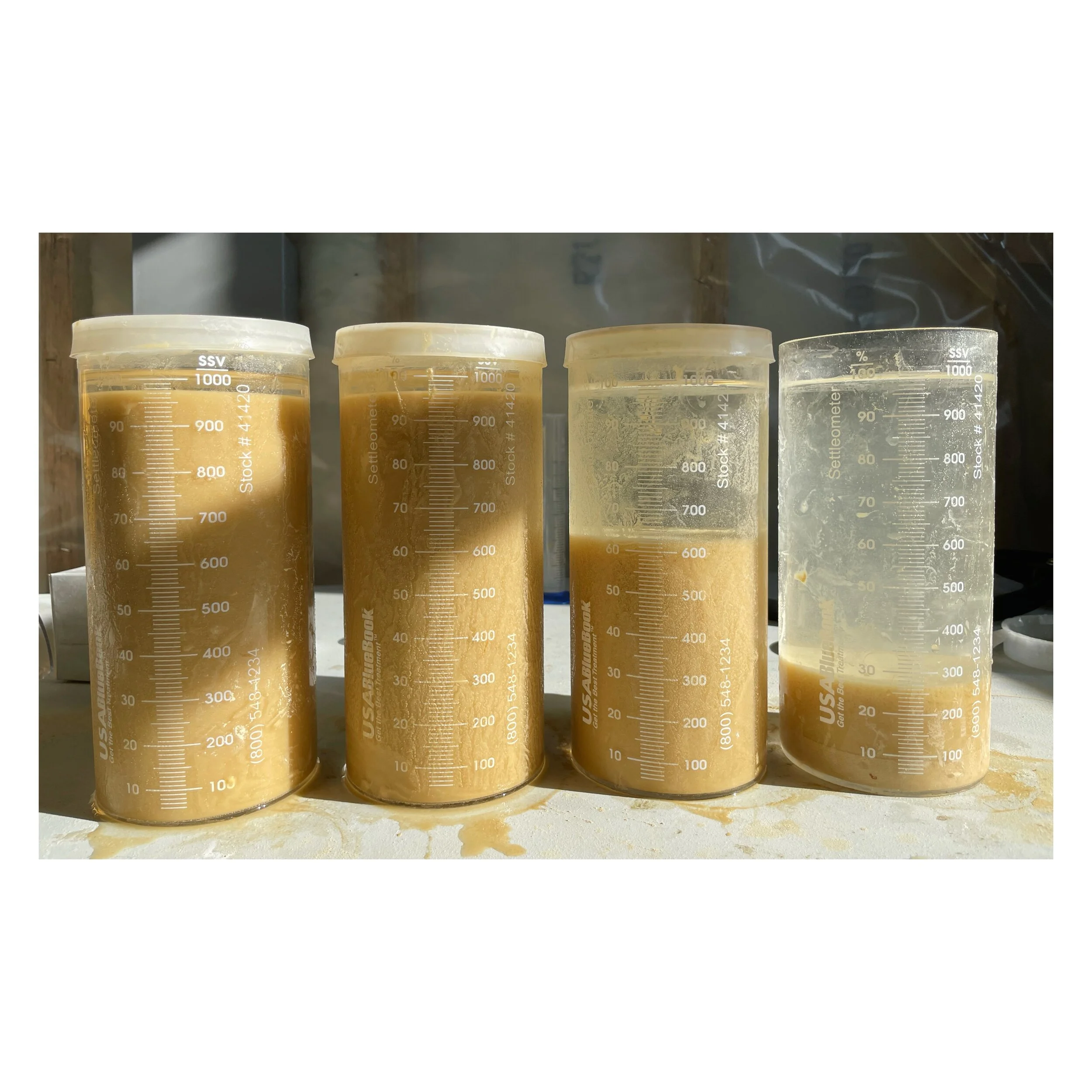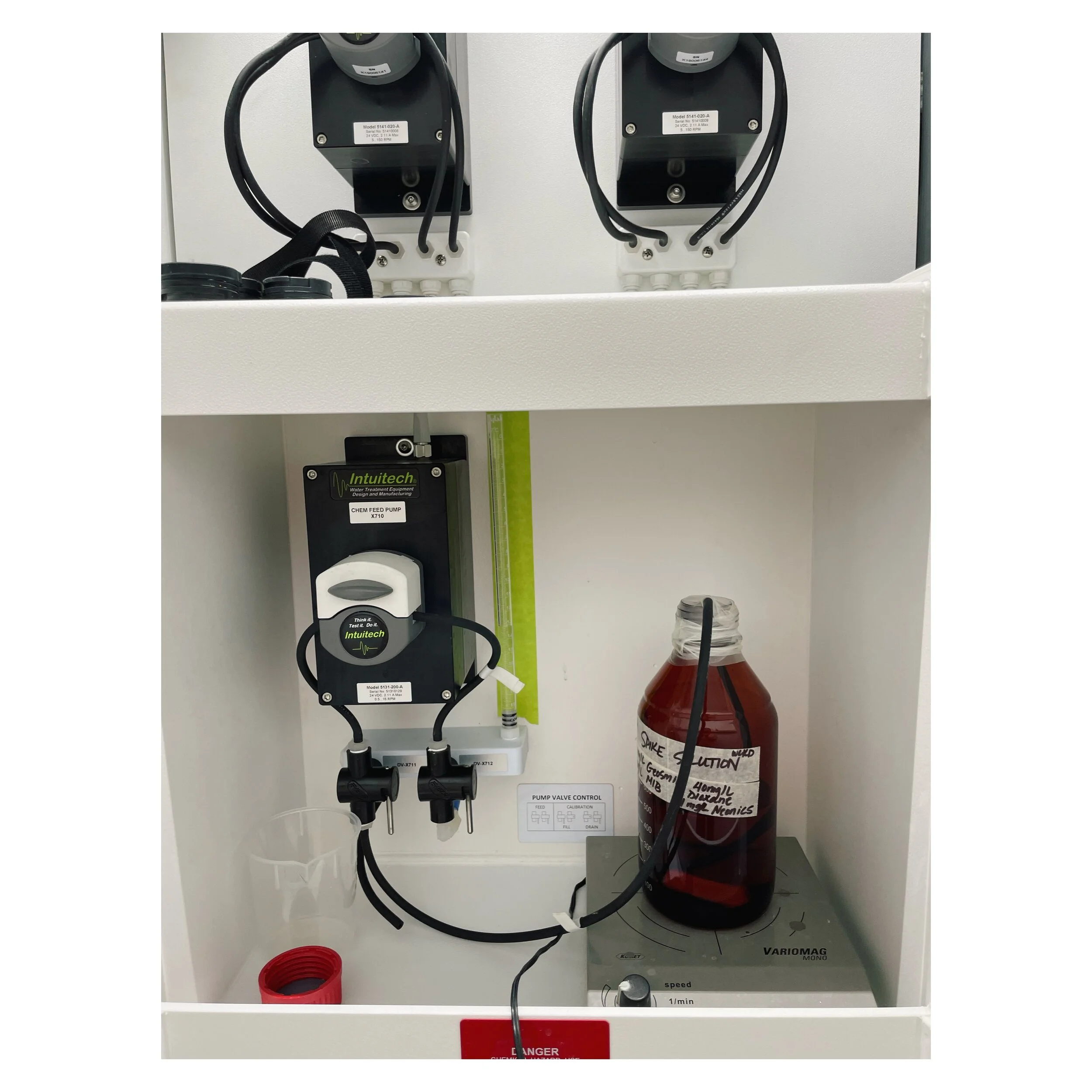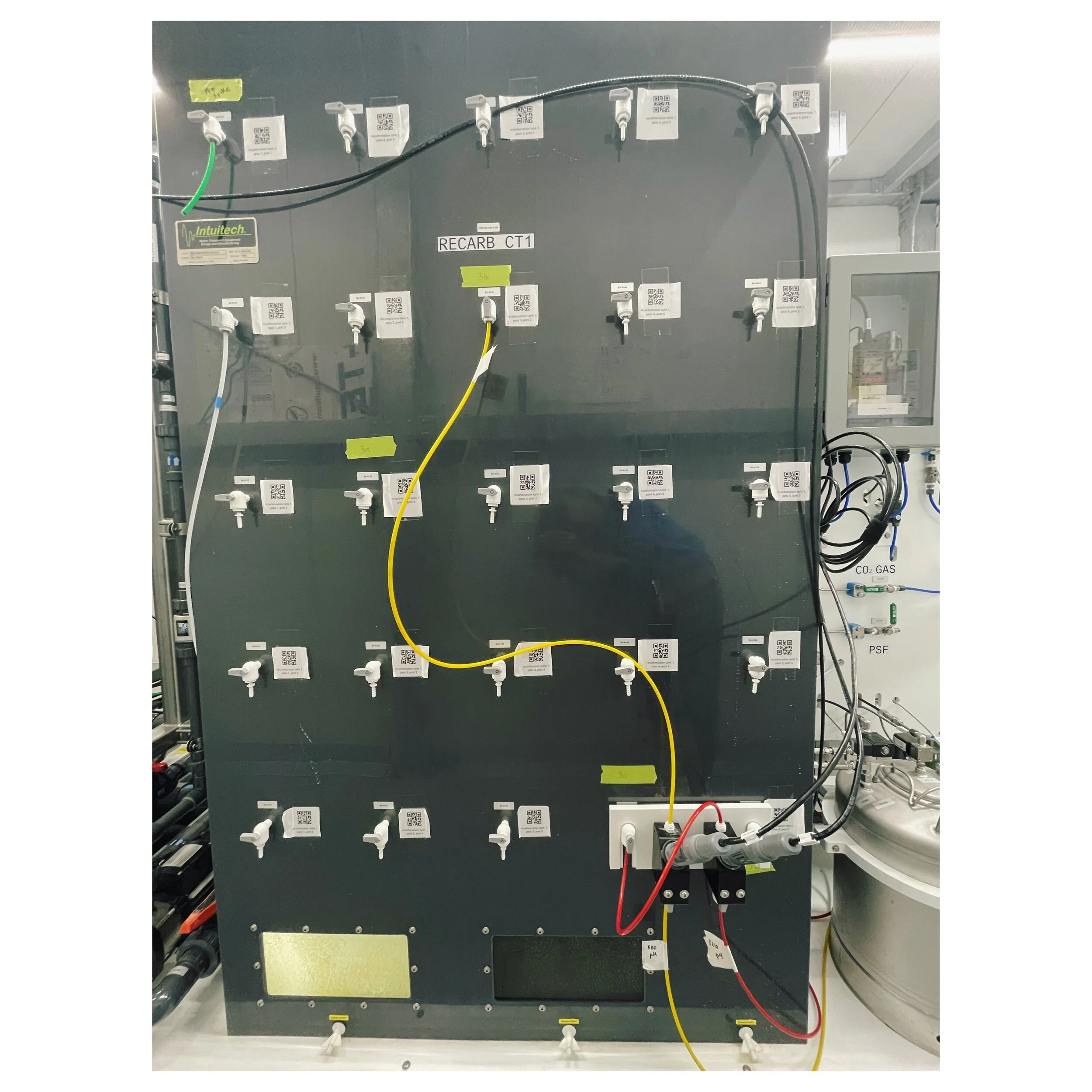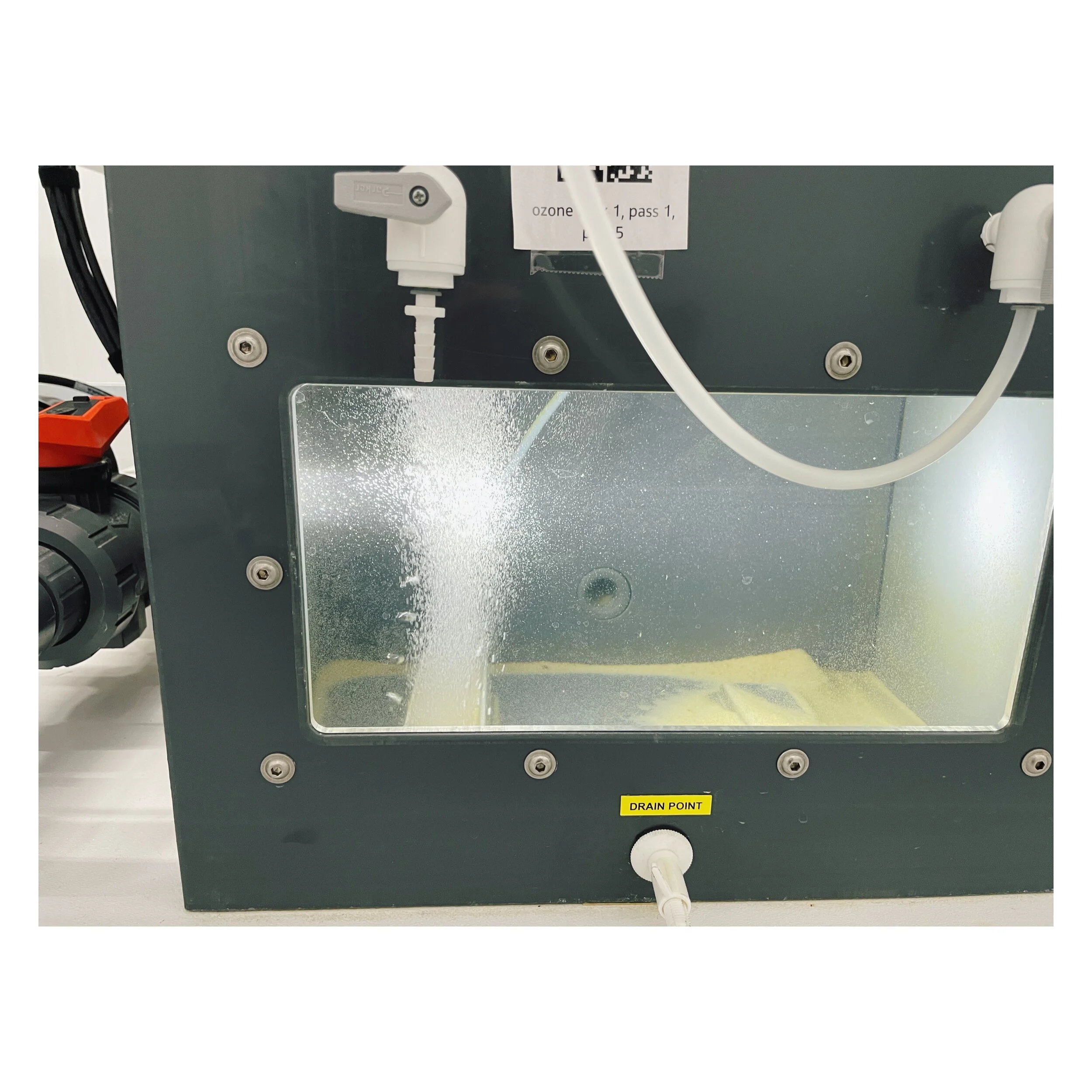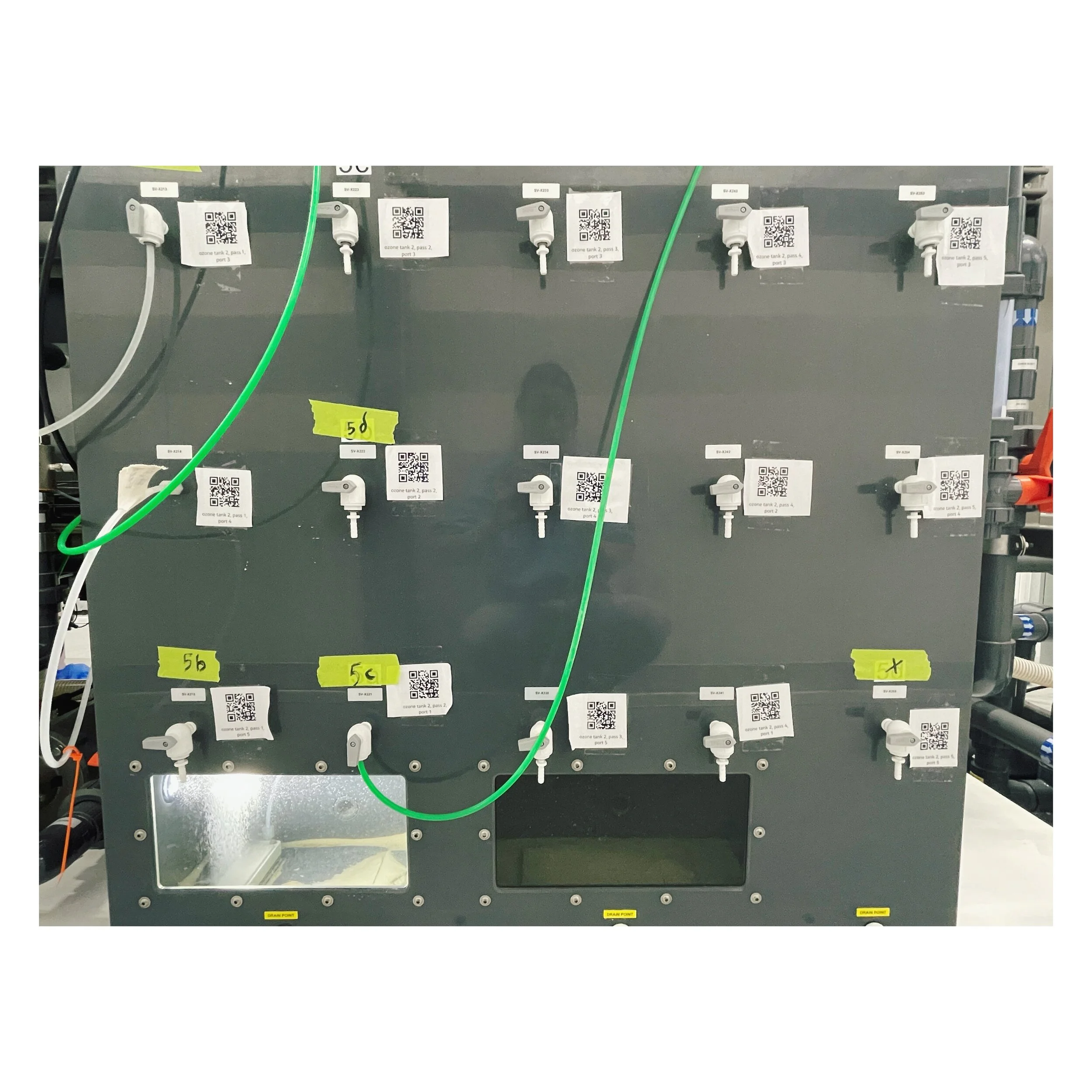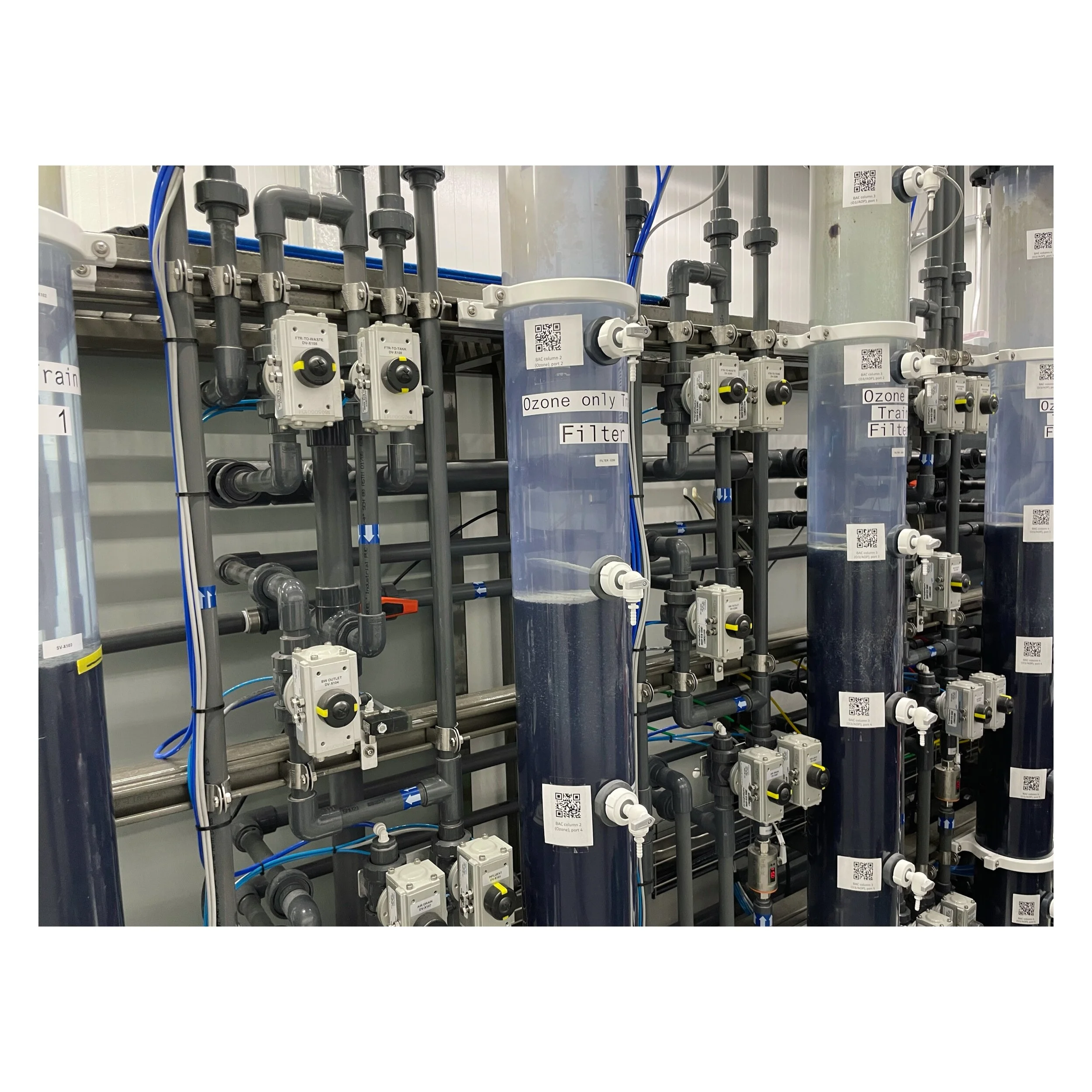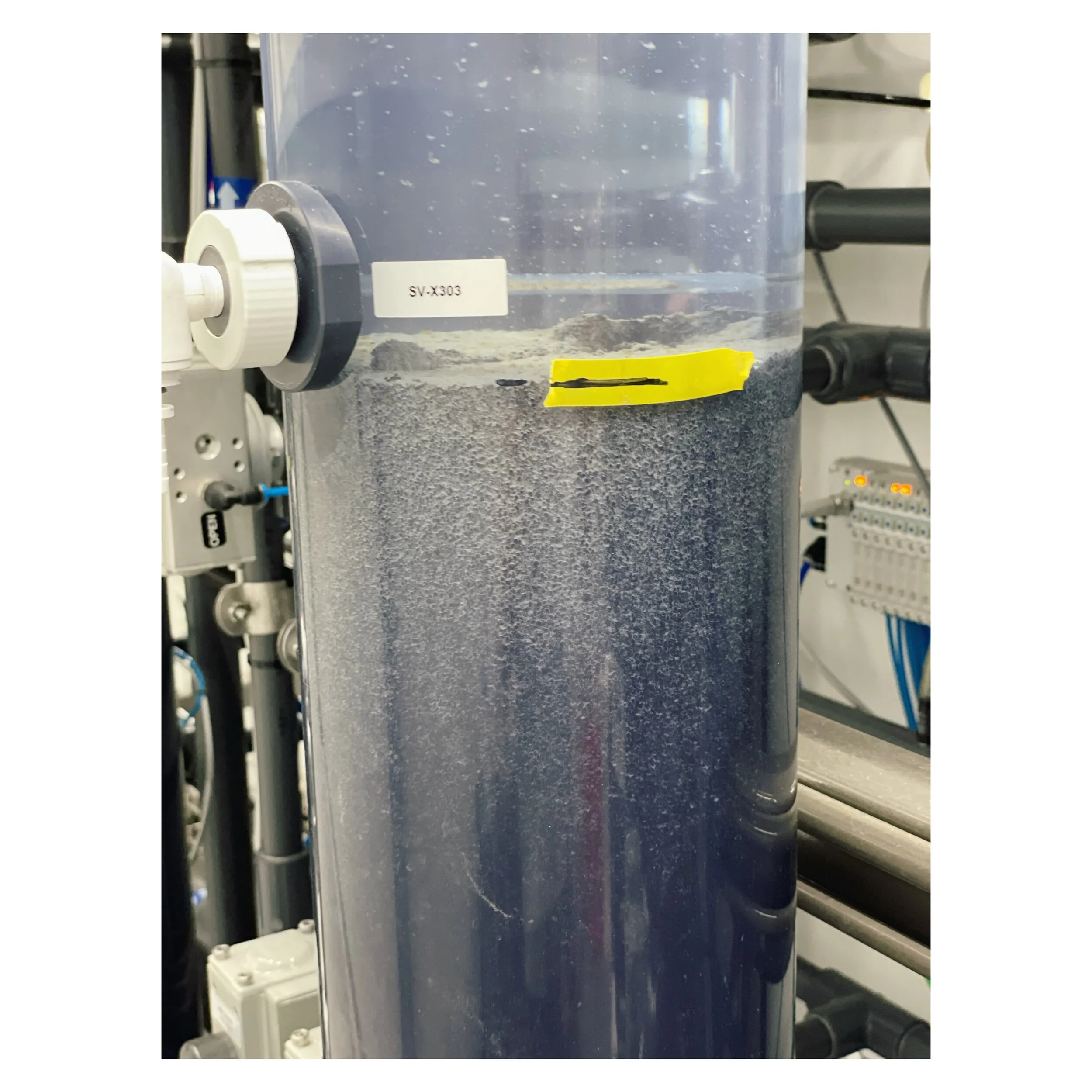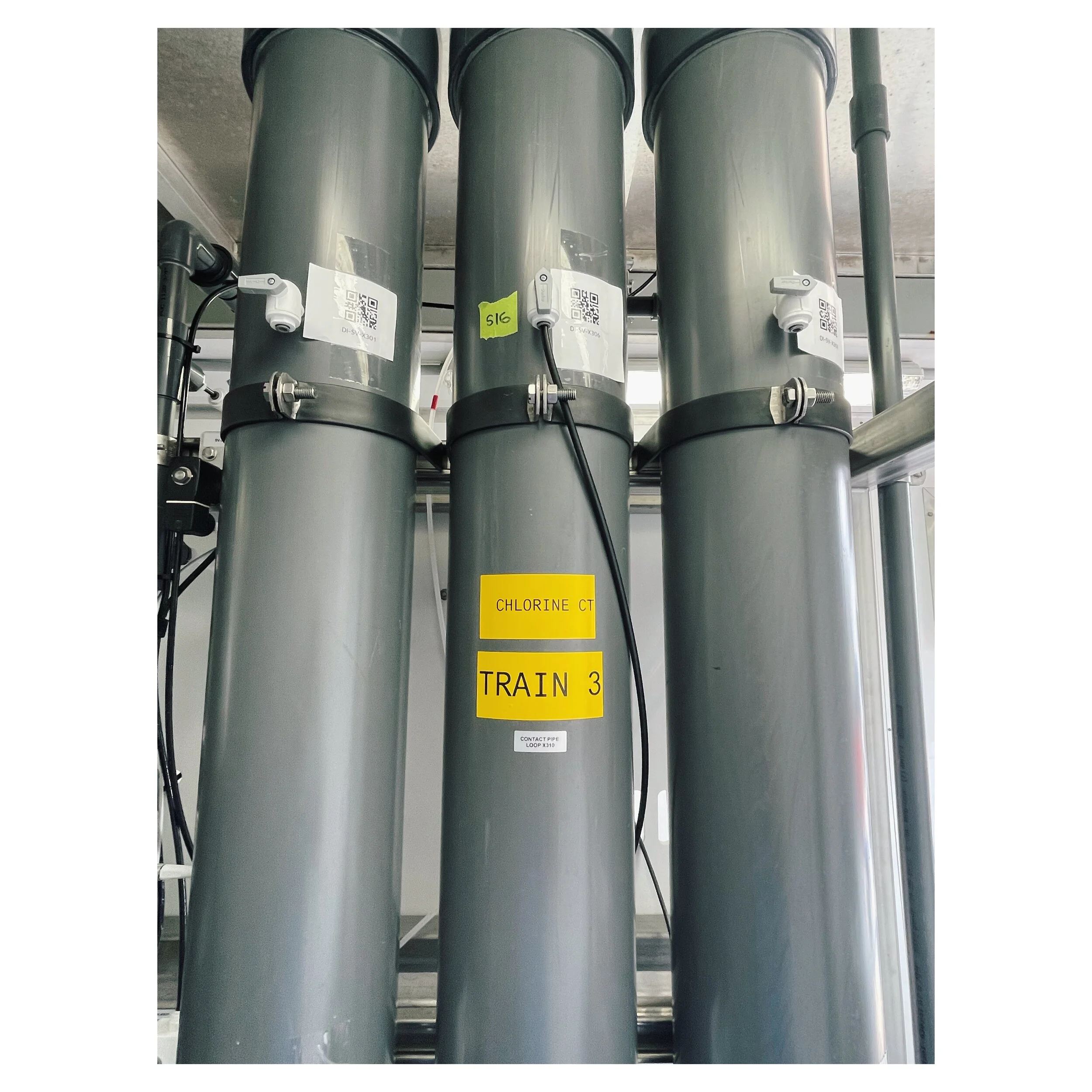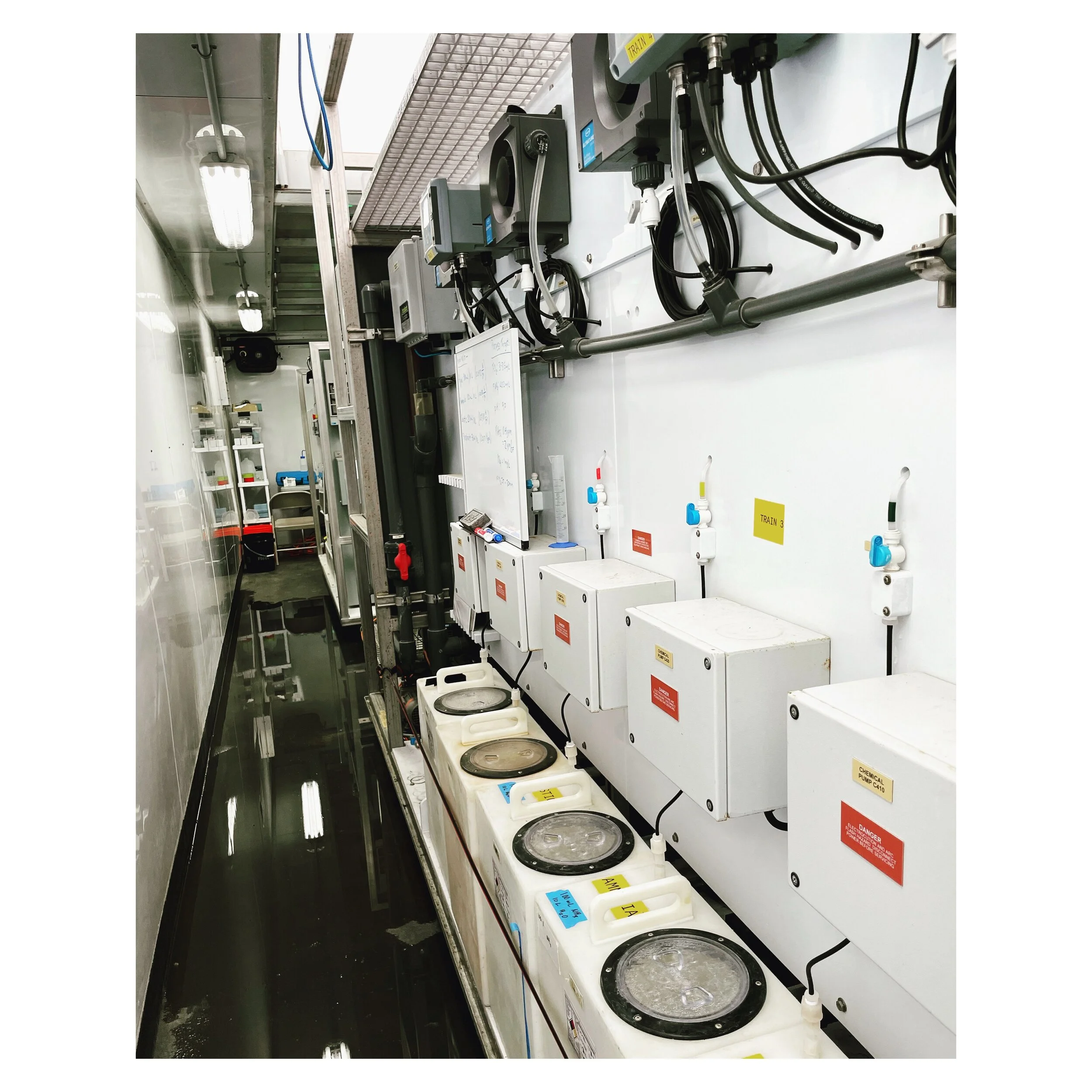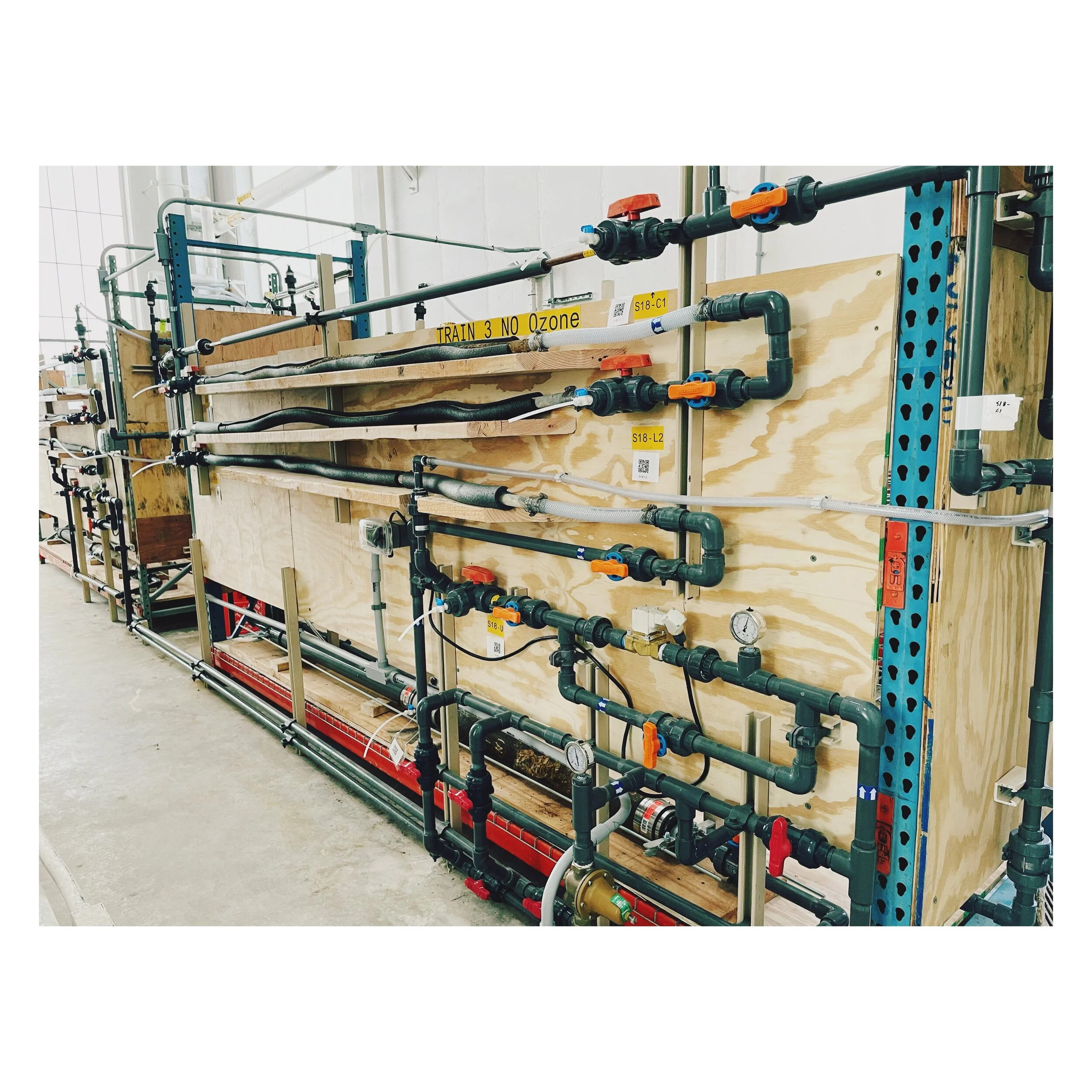The results of this study suggest that the addition of ozone is beneficial as it provides improved removal of a variety of trace organic contaminants, reduced formation of regulated disinfection byproduct precursors (DBPs) and N-nitrosodimethlyamine (NDMA), and does not have any negative impacts on filter performance (i.e., particle removal, filter run time). We observed no added benefits of using AOP versus ozone alone, likely because the pH conditions in recarbonated water already result in production of hydroxyl radicals with just ozone, so addition of hydrogen peroxide is not recommended at this time. The increased release of heterotrophic plate count (HPC) bacteria from the filters fed ozonated water and the higher assimilable organic carbon (AOC) concentrations following disinfection are potential concerns that likely can be effectively managed via proper disinfection and maintenance of a chloramine residual in the distribution system. Finally, replacing the granular activated carbon (GAC) in the filters when the new ozone system comes online would be beneficial in reducing exposure to trace organic contaminants that can desorb from the filter media at low levels for an indeterminant amount of time.
